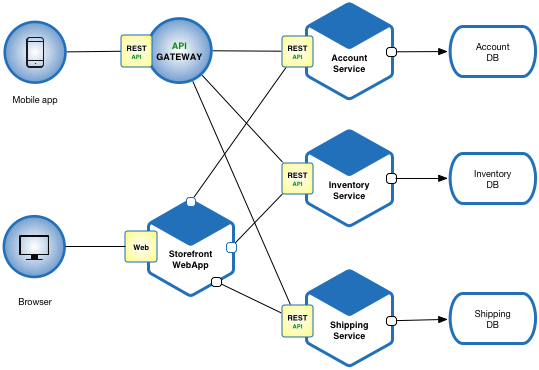| Table of Contents |
|---|
...
| Reference_description_with_linked_URLs_______________________ | Notes_________________________________________________________________ |
|---|---|
| Ward Cunningham - Portland Pattern Repository | |
| Gang of Four Design Patterns | |
| https://www.tutorialspoint.com/design_pattern/factory_pattern.htm | G4 Pattern summary tutorials point |
| https://springframework.guru/gang-of-four-design-patterns/ | G4 Pattern summary Spring - 1 page |
| JEE Enterprise Services Patterns | |
| Enterprise Integration Patterns | |
| https://microservices.io/patterns/index.html | Microservices Design Patterns |
| https://microservices.io/patterns/monolithic.html | Monolithic Architecture pattern |
| https://microservices.io/patterns/microservices.html | Microservices Architecture pattern |
Key Concepts
Declarative vs Imperative Coding
A great C# example of declarative vs. imperative programming is LINQ.
With imperative programming, you tell the compiler what you want to happen, step by step.
For example, let's start with this collection, and choose the odd numbers:
List<int> collection = new List<int> { 1, 2, 3, 4, 5 };With imperative programming, we'd step through this, and decide what we want:
List<int> results = new List<int>();
foreach(var num in collection)
{
if (num % 2 != 0)
results.Add(num);
}Here, we're saying:
- Create a result collection
- Step through each number in the collection
- Check the number, if it's odd, add it to the results
With declarative programming, on the other hand, you write code that describes what you want, but not necessarily how to get it (declare your desired results, but not the step-by-step):
var results = collection.Where( num => num % 2 != 0);Here, we're saying "Give us everything where it's odd", not "Step through the collection. Check this item, if it's odd, add it to a result collection."
G4 Pattern Summary
https://springframework.guru/gang-of-four-design-patterns/
...
Microservices Application Pattern
Please see the example applications developed by Chris Richardson. These examples on Github illustrate various aspects of the microservice architecture.
Resulting Context
Benefits
...
